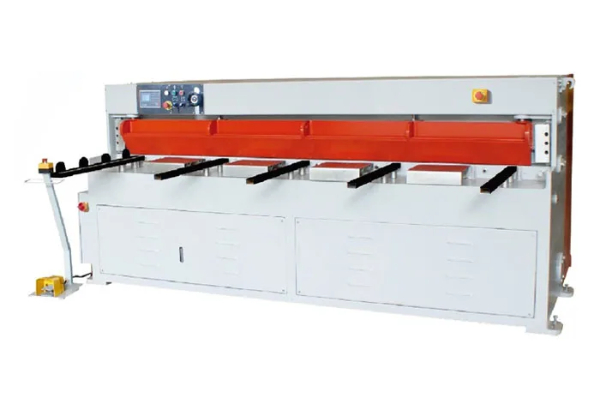
Troubleshooting Common Issues with Laser Sheet Cutting Machines
- By:Metmac
- 2024-08-22
- 164
Troubleshooting Common Issues with Laser Sheet Cutting Machines: A Guide for Precision Professionals
In the realm of precision manufacturing, laser sheet cutting machines reign supreme. These marvels of engineering wield focused laser beams to slice through metal sheets with unparalleled accuracy and speed. However, even the most advanced machines can encounter hiccups that hamper productivity and accuracy.
Delve into the Troubleshooting Labyrinth
Navigating the labyrinth of common issues with laser sheet cutting machines requires a discerning eye and a methodical approach. Let us unravel the most frequently encountered challenges and illuminate the path to resolution.
1. Inconsistent Cuts: The Enigma of Variance
Unpredictable cuts can plague laser machines, leaving operators perplexed. This issue may stem from a faulty laser beam, misaligned optics, or even variations in the material’s thickness or composition. Thoroughly inspect the entire system, ensuring that all components are calibrated and aligned precisely. If necessary, adjust the laser power or cutting speed to accommodate specific material properties.
2. Burr Formation: The Scourge of Rough Edges
Burrs, those pesky remnants of the cutting process, can degrade the quality of cut parts. To mitigate their formation, optimize the cutting parameters such as laser power and focal point. Additionally, experiment with different assist gases, such as nitrogen or oxygen, to reduce the heat generated during cutting.
3. Melting and Slag: Heat’s Unwanted Legacy
Excessive heat can lead to melting and slag formation, compromising the accuracy of the cut. Explore techniques to reduce heat input, such as employing a high-pressure assist gas or using a laser with a shorter wavelength. Adjust the cutting speed and laser power to minimize heat buildup.
4. Optical Misalignment: The Precision Maze
Misaligned optics, like disoriented compasses, can cause the laser beam to stray from its intended path. Regularly check the alignment of mirrors and lenses, utilizing precise alignment tools or laser-based measurement systems. Ensure that the laser beam is focused at the correct point on the material’s surface.
5. Software Glitches: The Digital Impasse
Even the most sophisticated software can encounter glitches that disrupt the smooth operation of the laser cutting machine. Reinstall or update the software to the latest version. If the issue persists, contact the software vendor for assistance.
Conclusion: Precision Restored
Troubleshooting common issues with laser sheet cutting machines empowers precision professionals to restore their machines to optimal performance. By meticulously following these steps, they can unravel the mysteries of inconsistent cuts, burr formation, melting, optical misalignment, and software glitches. With laser machines humming at their peak, productivity and accuracy soar, unlocking the full potential of these cutting-edge tools.
-
Advanced Sheet Metal Rolling, Cutting, and Folding Machines for Efficient Fabrication
2025/10/22 -
High-Precision Sheet Metal Bending and Cutting Solutions for Modern Manufacturing
2025/10/22 -
High-Precision Solutions from Leading Sheet Metal Cutting Machine Manufacturers
2025/09/11 -
Reliable Sheet Metal Equipment for Sale to Support Precision Fabrication
2025/07/17
-
Advanced Sheet Metal Rolling, Laser Cutting, and Folding Machines for Precision Fabrication
2025/10/31 -
High-Performance Sheet Metal Bending and Cutting Machines for Modern Fabrication
2025/10/31 -
High-Quality Sheet Metal Equipment for Sale: Efficient Solutions for Modern Manufacturing
2025/10/31 -
High-Performance Sheet Metal Equipment for Sale: Forming and Shearing Solutions for Modern Fabrication
2025/10/22
-
A Guide to the Latest Innovations in Sheet Metal Folding Machines
2024/11/29 -
Key Features to Consider When Investing in a Sheet Metal Folding Machine
2024/11/28 -
Enhancing Precision with Advanced Sheet Metal Folding Machines
2024/11/27 -
How to Choose the Right Sheet Metal Folding Machine for Your Workshop
2024/11/26






